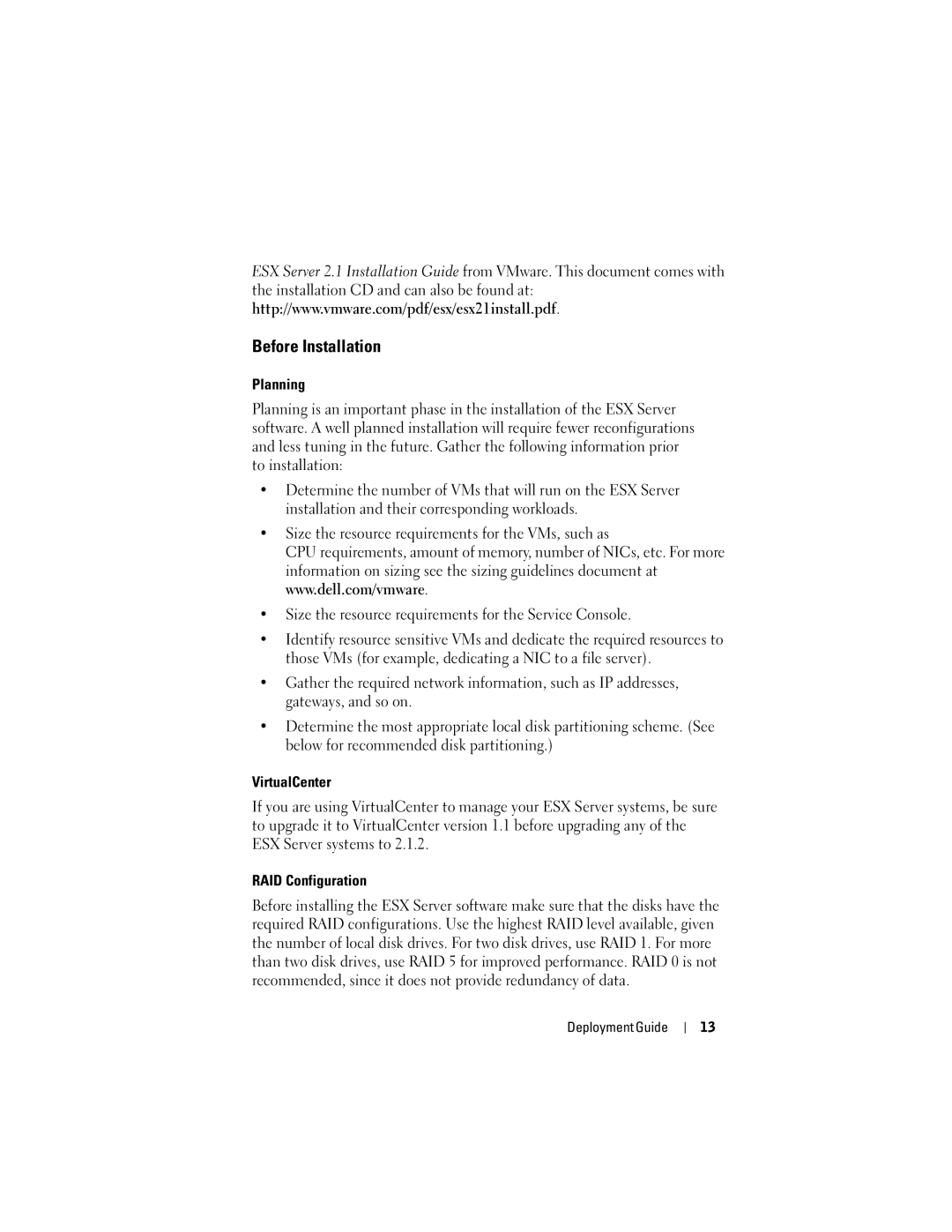ESX Server 2.1 Installation Guide from VMware. This document comes with the installation CD and can also be found at: http://www.vmware.com/pdf/esx/esx21install.pdf.
Before Installation
Planning
Planning is an important phase in the installation of the ESX Server software. A well planned installation will require fewer reconfigurations and less tuning in the future. Gather the following information prior to installation:
•Determine the number of VMs that will run on the ESX Server installation and their corresponding workloads.
•Size the resource requirements for the VMs, such as
CPU requirements, amount of memory, number of NICs, etc. For more information on sizing see the sizing guidelines document at www.dell.com/vmware.
•Size the resource requirements for the Service Console.
•Identify resource sensitive VMs and dedicate the required resources to those VMs (for example, dedicating a NIC to a file server).
•Gather the required network information, such as IP addresses, gateways, and so on.
•Determine the most appropriate local disk partitioning scheme. (See below for recommended disk partitioning.)
VirtualCenter
If you are using VirtualCenter to manage your ESX Server systems, be sure to upgrade it to VirtualCenter version 1.1 before upgrading any of the ESX Server systems to 2.1.2.
RAID Configuration
Before installing the ESX Server software make sure that the disks have the required RAID configurations. Use the highest RAID level available, given the number of local disk drives. For two disk drives, use RAID 1. For more than two disk drives, use RAID 5 for improved performance. RAID 0 is not recommended, since it does not provide redundancy of data.
Deployment Guide
13
